Application of Computer Simulation Technology in the Development of Tractor Transmission Systems
Abstract
1. Introduction
2. Tractor Transmission System
3. Application of Simulation in Tractor Transmission Development
3.1. Structural Optimization
3.2. Power-Shift Control
3.3. Energy Saving

4. Parameters in Modeling

5. Summary and Development Recommendations
- (1)
- A systematic introduction was given to the types and working principles of tractor transmission systems. Tractor transmissions not only come in a wide variety of forms but also have different operating conditions and principles from road vehicles. Understanding this knowledge is the foundation for correctly constructing a tractor transmission system model.
- (2)
- The modeling method of the tractor transmission system was introduced from three aspects: structural optimization, power-shift control, and energy saving. Specifically, key mathematical equations and modeling options were provided as references for correct modeling. On this basis, the applications of computer simulation technology in these key fields were reviewed separately.
- (3)
- The method of obtaining simulation parameters through system identification was introduced, and the implementation process was explained through case studies. The practical application of this method in the development of tractor transmission systems was also listed.
- (1)
- In the simulation research of tractor power-shift transmission, the vast majority of evaluation indicators for shift quality lack an experimental basis. Some of the existing indicators come from the evaluation system of road vehicles, while others are customized by researchers. The experimental results from John Deere clearly indicate that some evaluation indicators for the shift quality of road vehicles are not applicable to tractors used in field operations, which seriously undermines the scientific foundation of research in this field.
- (2)
- The vast majority of tractor simulation work relies on load models. However, tractors not only lack standard driving cycles but also systematic load datasets. This situation poses challenges to the performance evaluation of different tractor transmission systems and control strategies.
Author Contributions
Funding
Data Availability Statement
Conflicts of Interest
Nomenclature
| CVT | Continuously variable transmission. | Standing ratio of PG. | |
| AMT | Automated mechanical transmission. | , , , | Transmission efficiency of PG, meshing gears, closed PG, and CVT. |
| FEM | Finite element method. | , | Speed of input gear and output gear. |
| DEM | Discrete element method. | , | Torque of input gear and output gear. |
| RCP | Rapid Control Prototypes. | Gear ratio of meshing gears. | |
| HIL | Hardware-in-the-Loop. | , | Input and output speeds of the transmission. |
| HST | Hydrostatic transmission. | , | Input and output torques of the transmission. |
| PG | Planetary gear. | , , | Loss coefficients in closed PG. |
| OC | Planetary output coupled. | , , , | Number of gear teeth in enclosed PG. |
| IC | Planetary input coupled. | Number of cells in stack. | |
| PSA | Pattern search algorithm. | , , , , , | Stack voltage, nernst voltage, activation loss voltage, ohmic loss voltage, concentration loss voltage, and standard cell voltage. |
| PSGA | Particle swarm genetic algorithm. | Ideal gas constant. | |
| NSGA-II | Non-dominated sorting genetic algorithm II. | Stack temperature. | |
| MOPSO | Multi-objective Particle Swarm Optimizer. | Faraday constant. | |
| SOC | State of charge. | , , | Partial pressures of water, oxygen, and hydrogen. |
| , , , | Peak acceleration, jerk, peak sliding friction power, and sliding friction work. | , , | Current density, reaction exchange current density, and maximum current density. |
| Tractor velocity. | Charge transfer coefficient. | ||
| , , | Time, shift start time, shift start time. | Membrane resistance. | |
| , | Actual torque and maximum torque transmitted by the clutch. | Open circuit voltage. | |
| Slip speed of clutch. | , | Current and initial values of SOC. | |
| Clutch pressure. | Coulombic efficiency. | ||
| Spring stiffness. | Load current. | ||
| , , | Initial displacement, displacement increment, and stroke of clutch piston. | Self-discharging rate. | |
| , | Static and sliding friction forces of clutch piston. | Current time. | |
| Effective area of clutch piston. | Sampling period. | ||
| Mass of clutch piston. | Nominal capacity of battery. | ||
| Movement speed of clutch piston. | Battery resistance. | ||
| Normal force acting on clutch friction plates. | Battery power. | ||
| Number of clutch friction surfaces. | Motor power. | ||
| , , | Actual friction coefficient, static friction coefficient, and sliding friction coefficient of clutch friction plates. | Motor speed. | |
| , | Inner and outer radii of clutch friction plates. | Motor torque. | |
| , , | Constants related to materials. | Efficiency of motor. | |
| Engine speed. | , , , | Slop resistance, rolling resistance, air resistance, and traction resistance. | |
| Engine torque. | Mass of tractor unit. | ||
| Throttle opening. | Acceleration of gravity. | ||
| Fuel consumption of engine. | Slope angle. | ||
| Fuel consumption of “engine-transmission” system. | Rolling friction coefficients. | ||
| Displacement ratio of pump to motor. | Air density. | ||
| , | Rated displacement of pump and motor. | Tractor active area for air resistance. | |
| , | Speed of pump and motor. | , | Drag coefficient for translation on longitudinal axis and vertical axis. |
| Leakage coefficient. | Wind velocity. | ||
| Pressure difference between motor inlet and outlet. | Plowing specific resistance. | ||
| Dynamic viscosity of hydraulic oil. | , | Plowing depth and width of a single plow bottom. | |
| Torque of motor shaft. | Number of plow bottoms. | ||
| Viscous damping coefficient of motor. | Transfer function. | ||
| Friction loss coefficient of motor. | The step response of the system. | ||
| , , | Speed of sun gear, ring gear and carrier of PG. | , | Parameters to be estimated. |
| , , | Torque of sun gear, ring gear and carrier of PG. | The area of the step response. |
References
- Calcante, A.; Oberti, R.; Tangorra, F.M. Definition of linear regression models to calculate the technical parameters of Italian agricultural tractors. J. Agric. Eng. 2023, 54, 1525. [Google Scholar] [CrossRef]
- Chakraborty, A.; Arunachalam, K. Test methodology for validating tractor structural part under multiaxial loading. Proc. Inst. Mech. Eng. Part D-J. Automob. Eng. 2023, in press. [Google Scholar] [CrossRef]
- National Bureau of Statistics. Available online: https://data.stats.gov.cn (accessed on 22 July 2024).
- Chen, F.; Jiang, S.; Xie, X.; Chen, L.; Lan, Y. Engine universal characteristic modeling based on improved ant colony algorithm. Int. J. Agric. Biol. Eng. 2015, 8, 26–35. [Google Scholar] [CrossRef]
- Zhu, Z.; Yang, Y.; Wang, D.; Cai, Y.; Lai, L. Energy Saving Performance of Agricultural Tractor Equipped with Mechanic-Electronic-Hydraulic Powertrain System. Agriculture 2022, 12, 436. [Google Scholar] [CrossRef]
- Siddique, M.A.A.; Baek, S.-M.; Baek, S.-Y.; Jeon, H.-H.; Kim, Y.-J.; Kim, Y.-S.; Kim, W.-S.; Lee, D.-H.; Lim, R.-G.; Kim, T.-J. Application of auto power shift (APS) controller for minimizing fuel consumption and performance evaluation of an agricultural tractor. Comput. Electron. Agric. 2023, 214, 108279. [Google Scholar] [CrossRef]
- Li, B.; Pan, J.; Li, Y.; Ni, K.; Huang, W.; Jiang, H.; Liu, F. Optimization method of speed ratio for power-shift transmission of agricultural tractor. Machines 2023, 11, 438. [Google Scholar] [CrossRef]
- Qian, Y.; Wang, L.; Lu, Z. Design and Optimization of Power Shift Tractor Starting Control Strategy Based on PSO-ELM Algorithm. Agriculture 2024, 14, 747. [Google Scholar] [CrossRef]
- Herzog, D.; Schlosser, J.F.; Bertinatto, R.; de Farias, M.S.; Casali, L. Transmission systems in agricultural tractors marketed in Brazil. Cienc. Rural 2021, 51, e20200514. [Google Scholar] [CrossRef]
- Ahn, S.; Choi, J.; Kim, S.; Lee, J.; Choi, C.; Kim, H. Development of an integrated engine-hydro-mechanical transmission control algorithm for a tractor. Adv. Mech. Eng. 2015, 7, 1687814015593870. [Google Scholar] [CrossRef]
- Wang, J.; Xia, C.; Fan, X.; Cai, J. Research on transmission characteristics of hydromechanical continuously variable transmission of tractor. Math. Probl. Eng. 2020, 2020, 6978329. [Google Scholar] [CrossRef]
- Xiang, Y.; Li, R.; Brach, C.; Liu, X.; Geimer, M. A novel algorithm for hydrostatic-mechanical mobile machines with a dual-clutch transmission. Energies 2022, 15, 2095. [Google Scholar] [CrossRef]
- Chen, Y.; Mou, X. Natural characteristics analysis and experimental test of spiral bevel gear pair in the tractor transmission system. Adv. Mech. Eng. 2021, 13, 16878140211037120. [Google Scholar] [CrossRef]
- Pue, J.D.; Lamandé, M.; Schjønning, P.; Cornelis, W.M. DEM simulation of stress transmission under agricultural traffic Part 3: Evaluation with field experiment. Soil Tillage Res. 2020, 200, 104606. [Google Scholar] [CrossRef]
- Watanabe, M.; Sakai, K. Identifying tractor overturning scenarios using a driving simulator with a motion system. Biosyst. Eng. 2021, 210, 261–270. [Google Scholar] [CrossRef]
- Zhang, X.; Zhou, Z. Speed control strategy for tractor assisted driving based on chassis dynamometer test. Int. J. Agric. Biol. Eng. 2021, 14, 169–175. [Google Scholar] [CrossRef]
- Yan, X.; Tao, Q.; Xu, L. Dynamic loading system of an agricultural vehicle power wagon based on complex loading. IEEE Access 2020, 8, 196667–196674. [Google Scholar] [CrossRef]
- Yin, Y. Study on the Synchronous Ranges Shifting Stability of Hydro-Mechanical Continuously Variable Transmission. Master’s Thesis, Henan University of Science and Technology, Luoyang, China, 2017. [Google Scholar]
- Raikwar, S.; Wani, L.J.; Kumar, A.S.; Rao, M.S. Hardware-in-the-Loop test automation of embedded systems for agricultural tractors. Measurement 2019, 133, 271–280. [Google Scholar] [CrossRef]
- Meyer, H.J. Fahrzeuggetriebetechnik Getriebe in Traktoren; Technical Report for Tag der Wissenschaftlichen Aussprache; Technische Universität Berlin: Berlin, Germany, 2009. [Google Scholar]
- Contessotto, E.E.; Botta, G.F. Power and draft required by chisel plow on soils under no-tillage in the Argentinean flat Pampas. Rev. Fac. Cienc. Agrar. 2020, 52, 102–110. [Google Scholar]
- Ortopan, M.; Simonovic, V.; Tasic, N.; Veg, E.; Zlatanovic, I.; Gubeljak, N. Analyzing site-specific tractor draft force in different passes during plowing. Teh. Vjesn. 2024, 31, 228–232. [Google Scholar] [CrossRef]
- Badua, S.A.; Sharda, A.; Flippo, D.; Ciampitti, I.A. Real-Time Gauge Wheel Load Variability of a Row-Crop Planter During Field Operation. Trans. ASABE 2018, 61, 1517–1527. [Google Scholar] [CrossRef]
- Wicha, A. Maschinen und Geräte für die Bodenbearbeitung; Fachbuchverlag: Leipzig, Germany, 1956. [Google Scholar]
- Han, G.; Ahn, D.-V.; Kwon, D.; Kim, H.-S.; Park, Y.-J.; Lee, J.W. Development of a real-time tractor model for gear shift performance verification. Agriculture 2023, 13, 2133. [Google Scholar] [CrossRef]
- Byeon, S.-J.; Kim, S.-J.; Park, J.-K.; Park, Y.-J.; Lee, J.-W. Parameter study for establishing a synchronizer control strategy in tractor dual-clutch transmission. Agriculture 2024, 14, 218. [Google Scholar] [CrossRef]
- Wu, B. Friction Coefficient of Wet Clutches as a Function of Service Mileage. Lubricants 2024, 12, 147. [Google Scholar] [CrossRef]
- Shin, S.; Choi, S.B. Control-oriented modeling of wet clutch friction considering thermal dynamics. Mechatronics 2024, 99, 103146. [Google Scholar] [CrossRef]
- Han, H.-W.; Han, J.-S.; Chung, W.-J.; Kim, J.-T.; Park, Y.-J. Prediction of synchronization time for tractor power-shift transmission using multi-body dynamic simulation. Trans. ASABE 2021, 64, 1483–1498. [Google Scholar] [CrossRef]
- Li, B.; Sun, D.; Hu, M.; Liu, J. Automatic starting control of tractor with a novel power-shift transmission. Mech. Mach. Theory 2019, 131, 75–91. [Google Scholar] [CrossRef]
- Renius, K.T.; Resch, R. Continuously variable tractor transmissions. In Proceedings of the Agricultural Equipment Technology Conference, Louisville, KY, USA, 14–16 February 2005. [Google Scholar]
- Liu, Z.; Zhang, G.; Chu, G.; Niu, H.; Zhang, Y.; Yang, F. Design matching and dynamic performance test for an HST-based drive system of a hillside crawler tractor. Agriculture 2021, 11, 466. [Google Scholar] [CrossRef]
- Bukashkin, A.Y.; Dobretsov, R.Y.; Galyshev, Y.V. Split transmission of tractor with automatic gearbox. Procedia Eng. 2017, 206, 1728–1734. [Google Scholar] [CrossRef]
- Rao, Z. Design of Planetary Gear Transmission, 2nd ed.; Chemical Industry Press Co., Ltd.: Beijing, China, 2019. [Google Scholar]
- Renius, K.T. Fundamentals of Tractor Design; Springer Nature: Cham, Switzerland, 2020. [Google Scholar]
- Yu, J.; Cao, Z.; Cheng, M.; Pan, R.Z. Hydro-mechanical power split transmissions: Progress evolution and future trends. Proc. Inst. Mech. Eng. Part D 2019, 233, 727–739. [Google Scholar] [CrossRef]
- Xia, Y.; Sun, D. Characteristic analysis on a new hydro-mechanical continuously variable transmission system. Mech. Mach. Theory 2018, 126, 457–467. [Google Scholar] [CrossRef]
- Liu, F.; Wu, W.; Hu, J.; Yuan, S. Design of multi-range hydro-mechanical transmission using modular method. Mech. Syst. Signal Proc. 2019, 126, 1–20. [Google Scholar] [CrossRef]
- Blumenthal, U.; Hansen, T.; Hartmann, R.O. Claas CVT Development for Different Applications in Commercial Vehicles. In Proceedings of the International Off-Highway & Powerplant Congress & Exposition, Milwaukee, WI, USA, 11–13 September 2000. [Google Scholar]
- Chen, Y.-C.; Chen, L.-W.; Chang, M.-Y. A design of an unmanned electric tractor platform. Agriculture 2022, 12, 112. [Google Scholar] [CrossRef]
- Liu, J.; Xia, C.; Jiang, D.; Sun, Y. Development and testing of the power transmission system of a crawler electric tractor for greenhouses. Appl. Eng. Agric. 2020, 36, 797–805. [Google Scholar] [CrossRef]
- Mujiburrahman, K.; Saravanakumar, S.; Satheesh kumar, K.; Carciyo kaviya, J.J.; Krishnaraj, R. Design and analysis of E-glass gear box housing in tractor and optimization of its design parameters. Mater. Today: Proc. 2022, 49 Pt 8, 3696–3704. [Google Scholar] [CrossRef]
- Dong, S.; Li, S.; Fu, S.; Wang, K. Finite element analysis and optimization of tractor gearbox body under various kinds of working conditions. Sci. Rep. 2022, 12, 17386. [Google Scholar] [CrossRef]
- Hartmann, T.; Morita, S.; Tanner, G.; Chappell, D.J. High-frequency structure- and air-borne sound transmission for a tractor model using Dynamical Energy Analysis. Wave Motion 2019, 87, 132–150. [Google Scholar] [CrossRef]
- Sergienko, V.P.; Tseluev, M.Y.; Kupreev, A.V. Numerical simulation of thermal conditions in the oil-cooled friction multidisc clutch of a power-intensive wheel tractor. Part 1. Problem formulation. J. Frict. Wear 2010, 31, 261–269. [Google Scholar] [CrossRef]
- Sergienko, V.P.; Tseluev, M.Y.; Kupreev, A.V. Numerical simulation of the thermal conditions in the multidisk oil-cooled friction clutch of a power-intensive wheel tractor. Part 2. Study results. J. Frict. Wear 2010, 31, 334–340. [Google Scholar] [CrossRef]
- Ganesha, B.; Umesh, K.N.; Setty, G.R.; Naik, S. Dynamic vibration analysis of gear box casing using ANSYS software. Int. J. Innov. Res. Sci. Eng. Technol. 2017, 6, 13354–13362. [Google Scholar]
- Winkel, K.N.; Irmak, T.; Happee, R.; Shyrokau, B. Standards for passenger comfort in automated vehicles: Acceleration and jerk. Appl. Ergon. 2023, 106, 103881. [Google Scholar] [CrossRef]
- Duncan, J.R.; Wegscheid, E.L. Determinants of off-road vehicle transmission ‘shift quality’. Appl. Ergon. 1985, 16, 173–178. [Google Scholar] [CrossRef] [PubMed]
- Ahn, H.; Park, Y.; Kim, S.; Choi, C. Theoretical calculations and experimental studies of power loss in dual-clutch transmission of agricultural tractors. Agriculture 2023, 13, 1225. [Google Scholar] [CrossRef]
- Chen, Y.; Cheng, Z.; Qian, Y. Research on Wet Clutch Switching Quality in the Shifting Stage of an Agricultural Tractor Transmission System. Agriculture 2022, 12, 1174. [Google Scholar] [CrossRef]
- Wang, J.; Xia, C.; Fan, X.; Cai, J. Research on the Influence of Tractor Parameters on Shift Quality, Based on Uniform Design. Appl. Sci. 2022, 12, 4895. [Google Scholar] [CrossRef]
- Tanelli, M.; Panzani, G.; Savaresi, S.M.; Pirola, C. Transmission control for power-shift agricultural tractors: Design and end-of-line automatic tuning. Mechatronics 2011, 21, 285–297. [Google Scholar] [CrossRef]
- Bao, M.; Ni, X.; Zhao, X.; Li, S. Research on the HMCVT gear shifting smoothness of the four-speed self-propelled cotton picker. Mech. Sci. 2020, 11, 267–283. [Google Scholar] [CrossRef]
- Wang, G.; Zhang, X.; Zhu, S.; Zhang, H.; Tai, J.; Nguyen, V. Shift performance of tractor hydraulic power-split continuously variable transmission. Trans. CSAM 2015, 46, 7–15. [Google Scholar]
- Li, A.; Qin, D.; Guo, Z. Adaptive torque control of wet dual clutch based on dynamic friction coefficient estimation. Mechatronics 2024, 100, 103175. [Google Scholar] [CrossRef]
- Qian, Y.; Wang, L.; Cheng, Z.; Zhao, Y.; Wang, X.; Lu, Z. Research on optimal oil filling control strategy of wet clutch in agricultural machinery. Actuators 2022, 11, 315. [Google Scholar] [CrossRef]
- Chen, Y.; Qian, Y.; Lu, Z.; Zhou, S.; Xiao, M.; Bartos, P.; Xiong, Y.; Jin, G.; Zhang, W. Dynamic characteristic analysis and clutch engagement test of HMCVT in the high-power tractor. Complexity 2021, 2021, 8891127. [Google Scholar] [CrossRef]
- Kim, D.C.; Kim, K.U.; Park, Y.J.; Huh, J.Y. Analysis of shifting performance of power shuttle transmission. J. Terramech. 2007, 44, 111–122. [Google Scholar] [CrossRef]
- SimulationX Online Help. Available online: https://doc.simulationx.com/4.6/1033/Content/Libraries/PowerTransmission/Couplings/DiscClutch.htm (accessed on 10 July 2024).
- Baumann, J.; Klittich, M. Dynamic system simulation for model based design of tractor power train components. VDI-Berichte 2008, 2045, 19–26. [Google Scholar]
- Chen, X.; Zhao, Y.; Liu, K.; Wang, G.; Song, Y.; Chakrabarti, P. Shifting quality analysis of unmanned tractor equipped with series hydro-mechanical transmission. Trans. Can. Soc. Mech. Eng. 2024, 48, 221–237. [Google Scholar] [CrossRef]
- Zhu, Z.; Gao, X.; Pan, D.; Zhu, Y.; Cao, L. Study on the control strategy of shifting time involving multigroup clutches. Math. Probl. Eng. 2016, 2016, 9523251. [Google Scholar] [CrossRef]
- Goetz, M.; Levesley, M.C.; Crolla, D.A. Dynamics and control of gearshifts on twin-clutch transmissions. Proc. Inst. Mech. Eng. Part D J. Automob. Eng. 2005, 219, 951–963. [Google Scholar] [CrossRef]
- Li, B.; Sun, D.; Hu, M.; Zhou, X.; Liu, J.; Wang, D. Coordinated control of gear shifting process with multiple clutches for power-shift transmission. Mech. Mach. Theory 2019, 140, 274–291. [Google Scholar] [CrossRef]
- Xia, G.; Yu, X.; Tang, X.; Zhao, L.; Sun, B. Power shift control of high-power tractor based on pattern search. Appl. Eng. Agric. 2020, 36, 565–578. [Google Scholar] [CrossRef]
- Xia, G.; Wang, Y.; Tang, X.; Zhao, L.; Hu, J. Double-clutch power shift quality optimization based on optimal control theory. Appl. Eng. Agric. 2021, 37, 677–689. [Google Scholar] [CrossRef]
- Wang, G.; Song, Y.; Wang, J.; Xiao, M.; Cao, Y.; Chen, W.; Wang, J. Shift quality of tractors fitted with hydrostatic power split CVT during starting. Biosyst. Eng. 2020, 196, 183–201. [Google Scholar] [CrossRef]
- Xu, Z. Design and Power Shift Analysis of Hydrostatic Power Split Transmission with Single Planetary Gear Set. Master’s Thesis, Shandong Agricultural University, Taian, China, 2023. [Google Scholar]
- Li, A.; Qin, D.; Guo, Z.; Xia, Y.; Lv, C. Wet clutch pressure hysteresis compensation control under variable oil temperatures for electro-hydraulic actuators. Control Eng. Pract. 2023, 141, 105723. [Google Scholar] [CrossRef]
- Li, J.; Dong, H.; Han, B.; Zhang, Y.; Zhu, Z. Designing Comprehensive Shifting Control Strategy of Hydro-Mechanical Continuously Variable Transmission. Appl. Sci. 2022, 12, 5716. [Google Scholar] [CrossRef]
- Li, S.; Wu, C.; Sun, Z. Design and implementation of clutch control for automotive transmissions using terminal-sliding-mode control and uncertainty observer. IEEE Trans. Veh. Technol. 2016, 65, 1890–1898. [Google Scholar] [CrossRef]
- Zhang, Y.; Du, Y.; Mao, E.; Song, Z.; Chen, D.; Zhu, Z. Pressure control method of wet clutch in high-powered tractor based on digital twin. J. Mech. Eng. 2023, 59, 268–279. [Google Scholar] [CrossRef]
- Kolator, B.A. Modeling of Tractor Fuel Consumption. Energies 2021, 14, 2300. [Google Scholar] [CrossRef]
- Oyelade, O.A.; Oni, K.C. Modelling of tractor fuel consumption for ploughing operation in a sandy loam soil. AMA-Agric. Mech. Asia Afr. Lat. A. 2021, 52, 44–52. [Google Scholar]
- Siddique, M.A.A.; Baek, S.-M.; Baek, S.-Y.; Kim, W.-S.; Kim, Y.-S.; Kim, Y.-J.; Lee, D.-H.; Lee, K.-H.; Hwang, J.-Y. Simulation of fuel consumption based on engine load level of a 95 kw partial power-shift transmission tractor. Agriculture 2021, 11, 276. [Google Scholar] [CrossRef]
- Li, B.; Sun, D.; Hu, M.; Zhou, X.; Wang, D.; Xia, Y.; You, Y. Automatic gear-shifting strategy for fuel saving by tractors based on real-time identification of draught force characteristics. Biosyst. Eng. 2020, 193, 46–61. [Google Scholar] [CrossRef]
- Guo, Z.; Yuan, S.; Jing, C.; Wei, C. Modeling and simulation of shifting process in hydraulic machinery stepless transmission based on AMESim. Trans. Chin. Soc. Agric. Eng. 2009, 25, 86–91. [Google Scholar]
- Zhang, Z.; Li, X.; Peng, Z.; Jing, C.; Yang, S.; Chen, Z. Full-condition efficiency model and power loss analysis of hydro-mechanical CVT. Trans. CSAE 2024, 40, 48–58. [Google Scholar] [CrossRef]
- Wang, G.; Zhao, Y.; Song, Y.; Xue, L.; Chen, X. Optimizing the fuel economy of hydrostatic power-split system in continuously variable tractor transmission. Heliyon 2023, 9, e15915. [Google Scholar] [CrossRef]
- Xu, L. Study on Characteristics of Hydro-Mechanical Continuously Varlable Transmission of Tractor. Ph.D. Thesis, Xi’an University of Technology, Xi’an, China, 2007. [Google Scholar]
- Liu, F. Design and Characteristics Research on the Hydro-menchanical Continuously Variable Transmission of High-power Tractors. Master’s Thesis, Nanjing Agricultural University, Nanjing, China, 2015. [Google Scholar]
- Zhang, G.; Wang, K.; Xiao, M.; Zhou, M. HMCVT steady state transmission efficiency based on HST-EGT torque ratio. Trans. CSAM 2021, 52, 533–541. [Google Scholar]
- Zhang, J.; Liu, X.; Wei, H.; Liu, M.; Huang, W.; Yan, X. Study on shifting performance of tractor multi-clutch under different engagement rules. Agriculture 2024, 14, 254. [Google Scholar] [CrossRef]
- Xia, Y.; Sun, D.; Qin, D.; Zhou, X. Optimisation of the power-cycle hydro-mechanical parameters in a continuously variable transmission designed for agricultural tractors. Biosyst. Eng. 2020, 193, 12–24. [Google Scholar] [CrossRef]
- Zhang, Q.; Sun, D.Y.; Qin, D.T. Optimal parameters design method for power reflux hydro-mechanical transmission system. Proc. Inst. Mech. Eng. Part D 2019, 233, 585–594. [Google Scholar] [CrossRef]
- İnce, E.; Güler, M.A. Design and analysis of a novel power-split infinitely variable power transmission system. J. Mech. Des. 2019, 141, 54501. [Google Scholar] [CrossRef]
- Rossetti, A.; Macor, A. Multi-objective optimization of hydro-mechanical power split transmissions. Mech. Mach. Theory 2013, 62, 112–128. [Google Scholar] [CrossRef]
- Rossetti, A.; Macor, A.; Scamperle, M. Optimization of components and layouts of hydromechanical transmissions. Int. J. Fluid Power 2017, 18, 123–134. [Google Scholar] [CrossRef]
- Zhao, Y. Research on Energy Consumption Law of Transmission System of Hydro-Mechanical Transmission Tractors. Master’s Thesis, Shandong Agricultural University, Taian, China, 2024. [Google Scholar]
- İnce, E.; Güler, M.A. On the advantages of the new power-split infinitely variable transmission over conventional mechanical transmissions based on fuel consumption analysis. J. Clean. Prod 2020, 244, 118795. [Google Scholar] [CrossRef]
- Rossetti, A.; Macor, A.; Benato, A. Impact of control strategies on the emissions in a city bus equipped with power-split transmission. Transport. Res. Transp. Environ. 2017, 50, 357–371. [Google Scholar] [CrossRef]
- Rossetti, A.; Macor, A. Control strategies for a powertrain with hydromechanical transmission. Energy Proc. 2018, 148, 978–985. [Google Scholar] [CrossRef]
- Liang, L.; Li, Q.; Tan, Y.; Yang, Z. Multi-parameter optimization of HMCVT fuel economy using parameter cyclic algorithm. Trans. CSAE 2023, 39, 48–55. [Google Scholar] [CrossRef]
- Zhang, M.; Wang, J.; Wang, J.; Guo, Z.; Guo, F.; Xi, Z.; Xu, J. Speed changing control strategy for improving tractor fuel economy. Trans. CSAE 2020, 36, 82–89. [Google Scholar] [CrossRef]
- Martini, V.; Mocera, F.; Somà, A. Numerical investigation of a fuel cell-powered agricultural tractor. Energies 2022, 15, 8818. [Google Scholar] [CrossRef]
- Zhang, R.; Xia, B.; Li, B.; Cao, L.; Lai, Y.; Zheng, W.; Wang, H.; Wang, W. State of the art of lithium-ion battery SOC estimation for electrical vehicles. Energies 2018, 11, 1820. [Google Scholar] [CrossRef]
- Baek, S.-Y.; Kim, Y.-S.; Kim, W.-S.; Baek, S.-M.; Kim, Y.-J. Development and verification of a simulation model for 120 kw class electric AWD (All-Wheel-Drive) tractor during driving operation. Energies 2020, 13, 2422. [Google Scholar] [CrossRef]
- Zhang, L.; Liu, W.; Qi, B. Energy optimization of multi-mode coupling drive plug-in hybrid electric vehicles based on speed prediction. Energy 2020, 206, 118126. [Google Scholar] [CrossRef]
- Zhang, L.; Liu, W.; Qi, B. Innovation design and optimization management of a new drive system for plug-in hybrid electric vehicles. Energy 2019, 186, 115823. [Google Scholar] [CrossRef]
- Baek, S.Y.; Kim, W.S.; Kim, Y.S.; Kim, Y.J.; Park, C.G.; An, S.C.; Moon, H.C.; Kim, B.S. Development of a simulation model for an 80 kw-class electric All-Wheel-Drive (AWD) tractor using agricultural workload. J. Drive Control 2020, 17, 27–36. [Google Scholar]
- Medževeprytė, U.K.; Makaras, R.; Lukoševičius, V.; Kilikevičius, S. Application and efficiency of a series-hybrid drive for agricultural use based on a modified version of the world harmonized transient cycle. Energies 2023, 16, 5379. [Google Scholar] [CrossRef]
- Medževeprytė, U.K.; Makaras, R.; Lukoševičius, V.; Keršys, A. Evaluation of the working parameters of a series-hybrid tractor under the soil work conditions. Teh. Vjesn. 2022, 29, 45–50. [Google Scholar] [CrossRef]
- Mao, Y.; Wu, Y.; Yan, X.; Liu, M.; Xu, L. Simulation and experimental research of electric tractor drive system based on Modelica. PLoS ONE 2022, 17, e0276231. [Google Scholar] [CrossRef] [PubMed]
- Li, T.; Xie, B.; Li, Z.; Li, J. Design and optimization of a dual-input coupling powertrain system: A case study for electric tractors. Appl. Sci. 2020, 10, 1608. [Google Scholar] [CrossRef]
- Wang, S.; Wu, X.; Zhao, X.; Wang, S.; Xie, B.; Song, Z.; Wang, D. Co-optimization energy management strategy for a novel dual-motor drive system of electric tractor considering efficiency and stability. Energy 2023, 281, 128074. [Google Scholar] [CrossRef]
- Mocera, F.; Martini, V. Numerical performance investigation of a hybrid eCVT specialized agricultural tractor. Appl. Sci. 2022, 12, 2438. [Google Scholar] [CrossRef]
- Rossi, C.; Pontara, D.; Falcomer, C.; Bertoldi, M.; Mandrioli, R. A Hybrid–Electric Driveline for Agricultural Tractors Based on an e-CVT Power-Split Transmission. Energies 2021, 14, 6912. [Google Scholar] [CrossRef]
- LMS Imagine. AMESim User’s Guides; LMS Imagine: Roanne, France, 2013. [Google Scholar]
- Makange, N.R.; Ji, C.; Torotwa, I. Prediction of cutting forces and soil behavior with discrete element simulation. Comput. Electron. Agric. 2020, 179, 105848. [Google Scholar] [CrossRef]
- Tong, J.; Jiang, X.; Wang, Y.; Ma, Y.; Li, J.; Sun, J. Tillage force and disturbance characteristics of different geometric-shaped subsoilers via DEM. Adv. Manuf. 2020, 8, 392–404. [Google Scholar] [CrossRef]
- Zhai, S.; Shi, Y.; Zhou, J.; Liu, J.; Huang, D.; Zou, A.; Jiang, P. Simulation optimization and experimental study of the working performance of a vertical rotary tiller based on the discrete element method. Actuators 2022, 11, 342. [Google Scholar] [CrossRef]
- Kim, Y.-S.; Siddique, M.A.A.; Kim, W.-S.; Kim, Y.-J.; Lee, S.-D.; Lee, D.-K.; Hwang, S.-J.; Nam, J.-S.; Park, S.-U.; Lim, R.-G. DEM simulation for draft force prediction of moldboard plow according to the tillage depth in cohesive soil. Comput. Electron. Agric. 2021, 189, 106368. [Google Scholar] [CrossRef]
- Čermák, M.; Mitáš, S. Theoretical analysis of the forces and torques acting on a tractor during ploughing. J. Terramech. 2021, 96, 23–27. [Google Scholar] [CrossRef]
- Kim, W.; Kim, Y.; Kim, Y. Development of prediction model for axle torque of agricultural tractors. Trans. ASABE 2020, 63, 1773–1786. [Google Scholar] [CrossRef]
- Fang, C. Process Identification; Tsinghua University Press: Beijing, China, 2003. [Google Scholar]
- Wang, G.; Zhu, S.; Wang, S.; Shi, L.; Ni, X.; Ouyang, D. Speed ratio control of tractor hydraulic mechanical CVT. Trans. CSAE 2013, 29, 17–23. [Google Scholar]
- Cheng, Z.; Lu, Z. Model modification and parameter identification of tractor hydraulic transmission system characteristics. Trans. CSAE 2022, 38, 33–41. [Google Scholar] [CrossRef]
- Cheng, Z.; Lu, Z. System response modeling of HMCVT for tractors and the comparative research on system identification methods. Comput. Electron. Agric. 2022, 202, 107386. [Google Scholar] [CrossRef]
- Musialek, I.; Kesy, A.; Olszak, A.; Choi, S.B. Parameter estimation of transfer function of viscous clutch with electrorheological fluid and torque control. J. Intell. Mater. Syst. Struct. 2024, 35, 410–423. [Google Scholar] [CrossRef]
- Tørdal, S.S.; Klausen, A.; Bak, M.K. Experimental system identification and black box modeling of hydraulic directional control valve. Model. Identif. Control 2015, 35, 225–235. [Google Scholar] [CrossRef]
- Cheng, Z.; Lu, Z.; Dai, F. Research on HMCVT efficiency model based on the improved SA algorithm. Math. Probl. Eng. 2019, 2019, 2856908. [Google Scholar] [CrossRef]

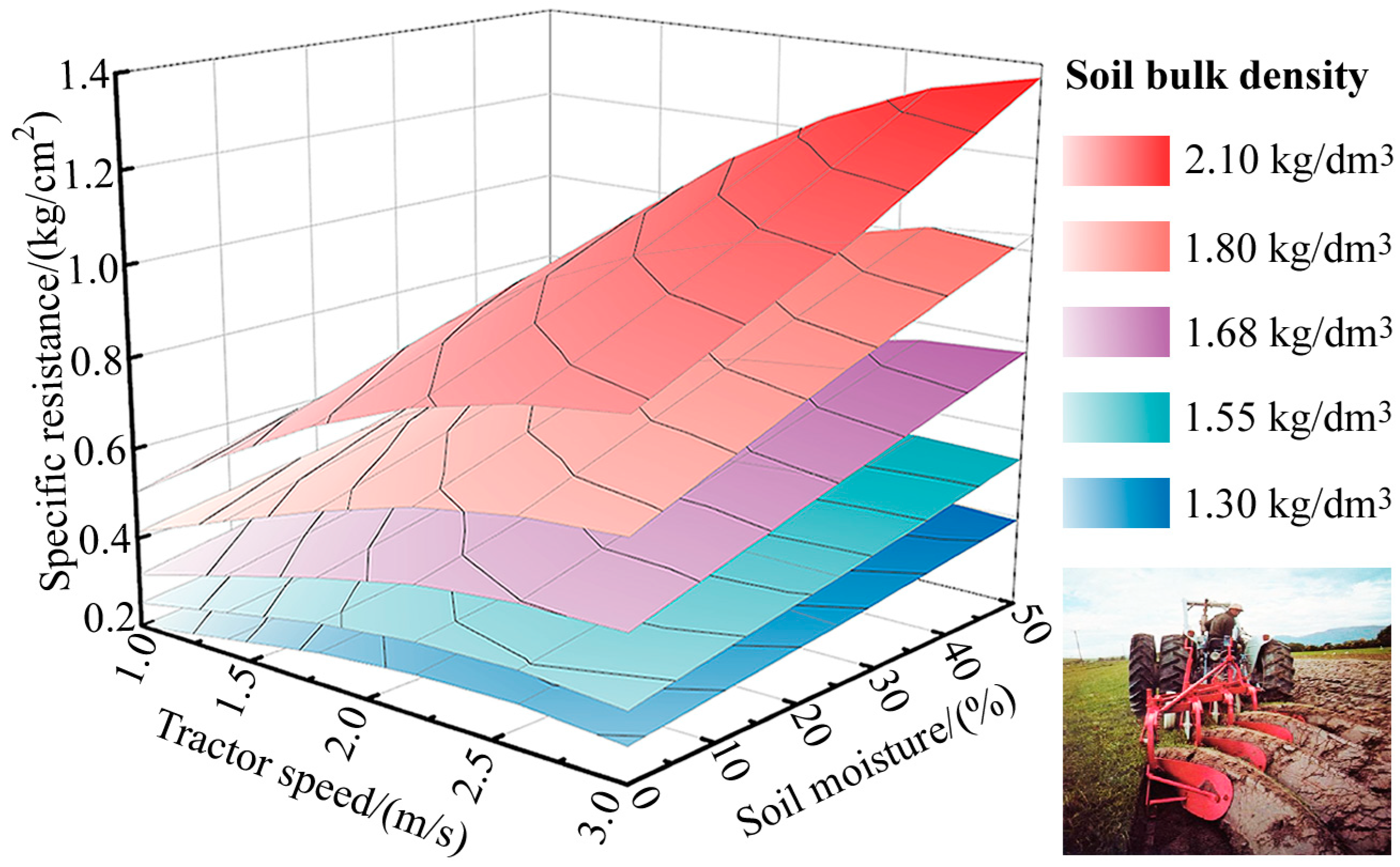


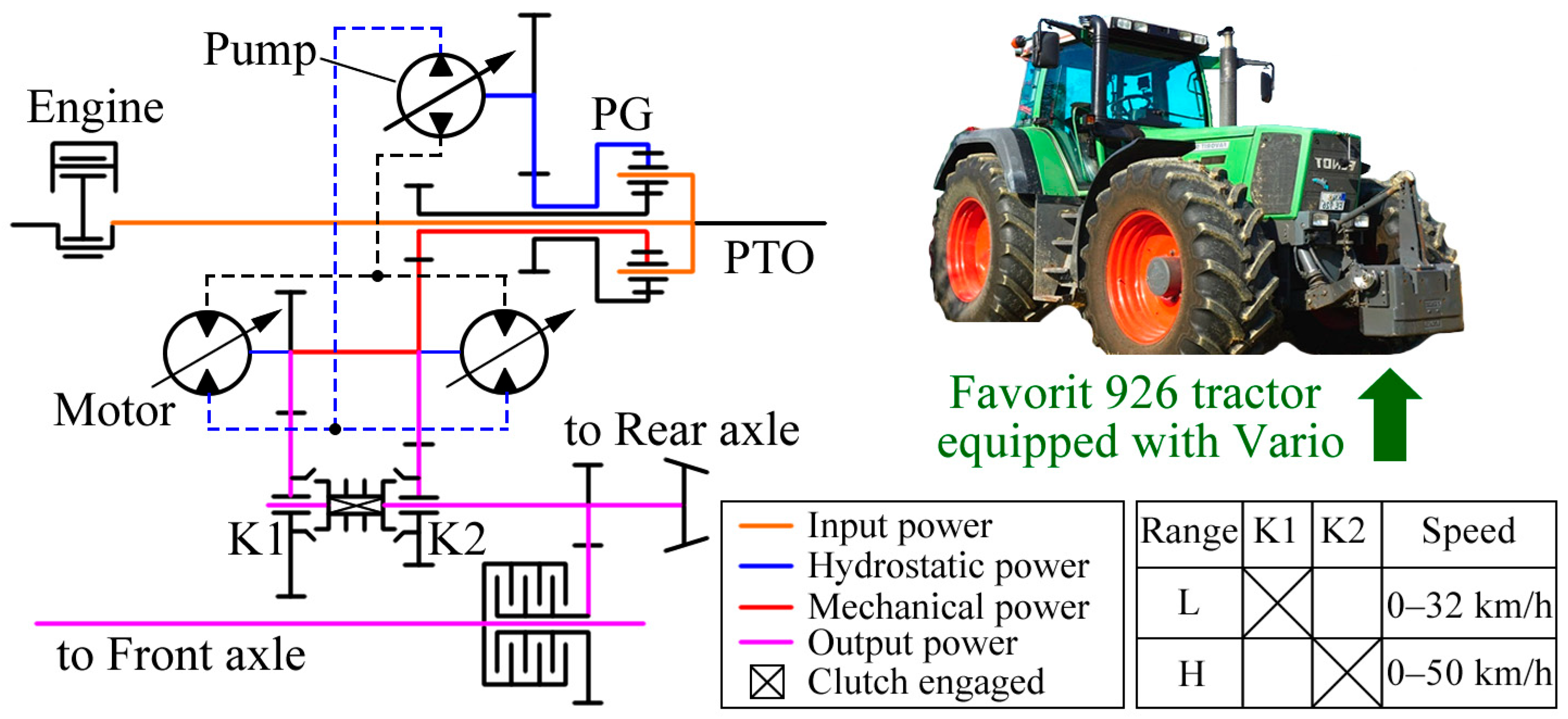
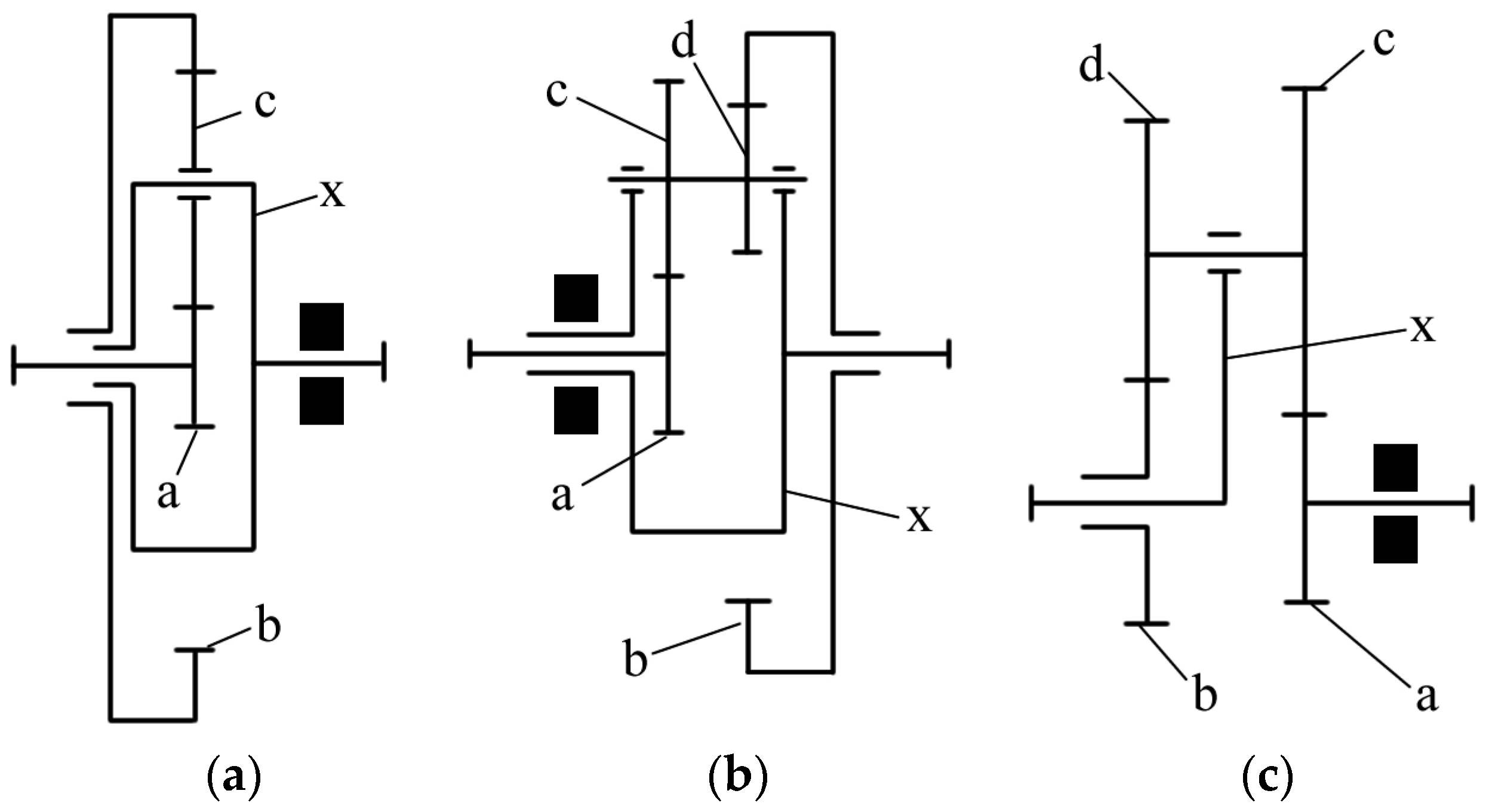
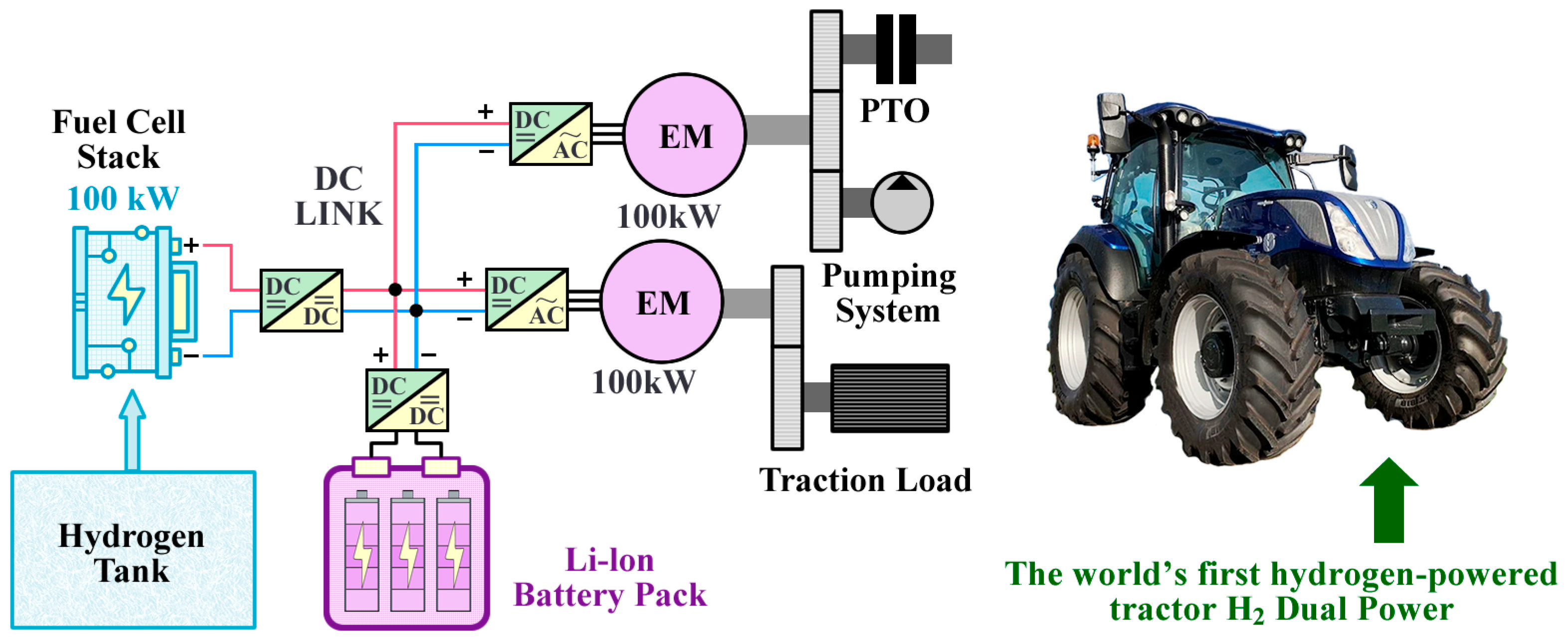
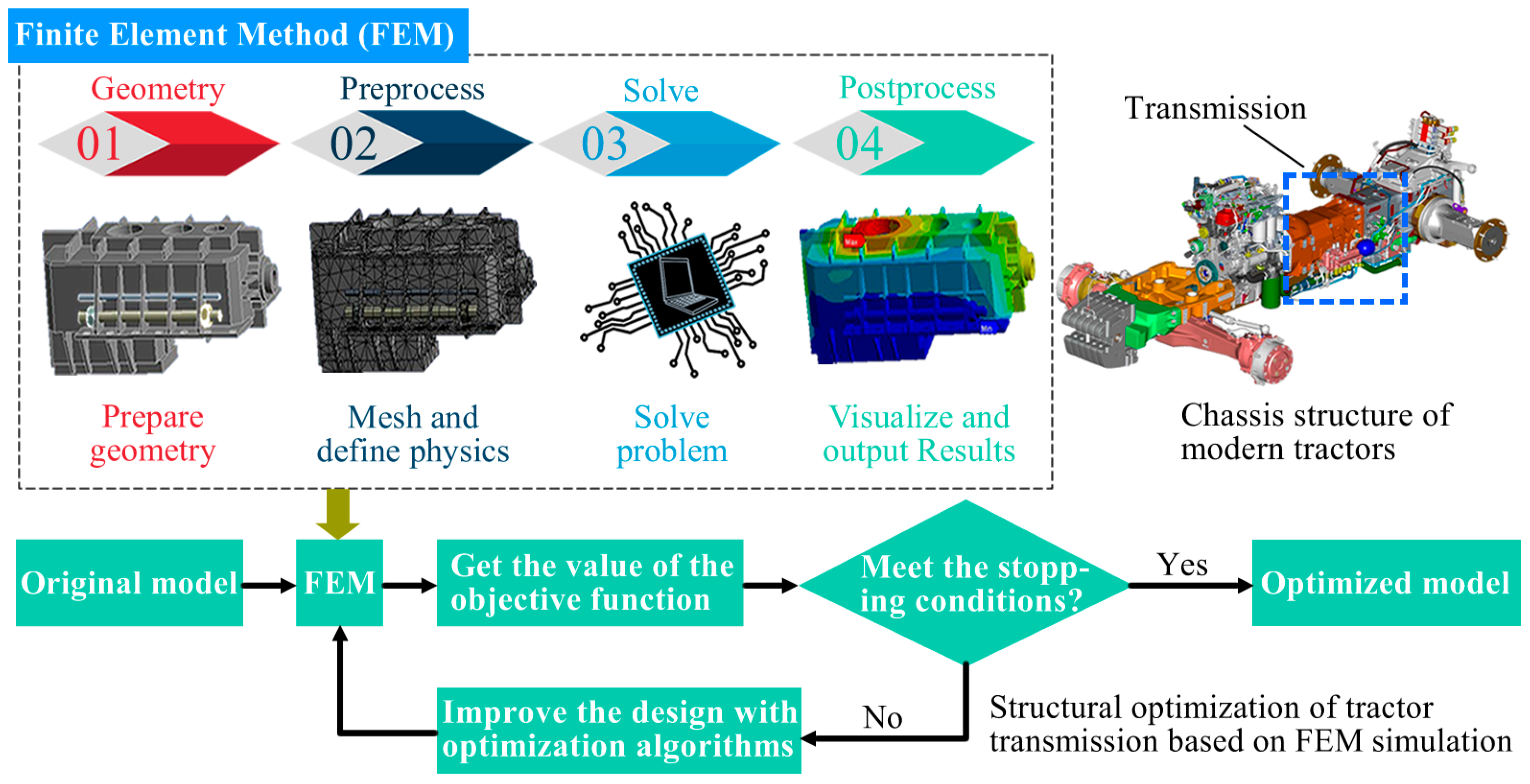
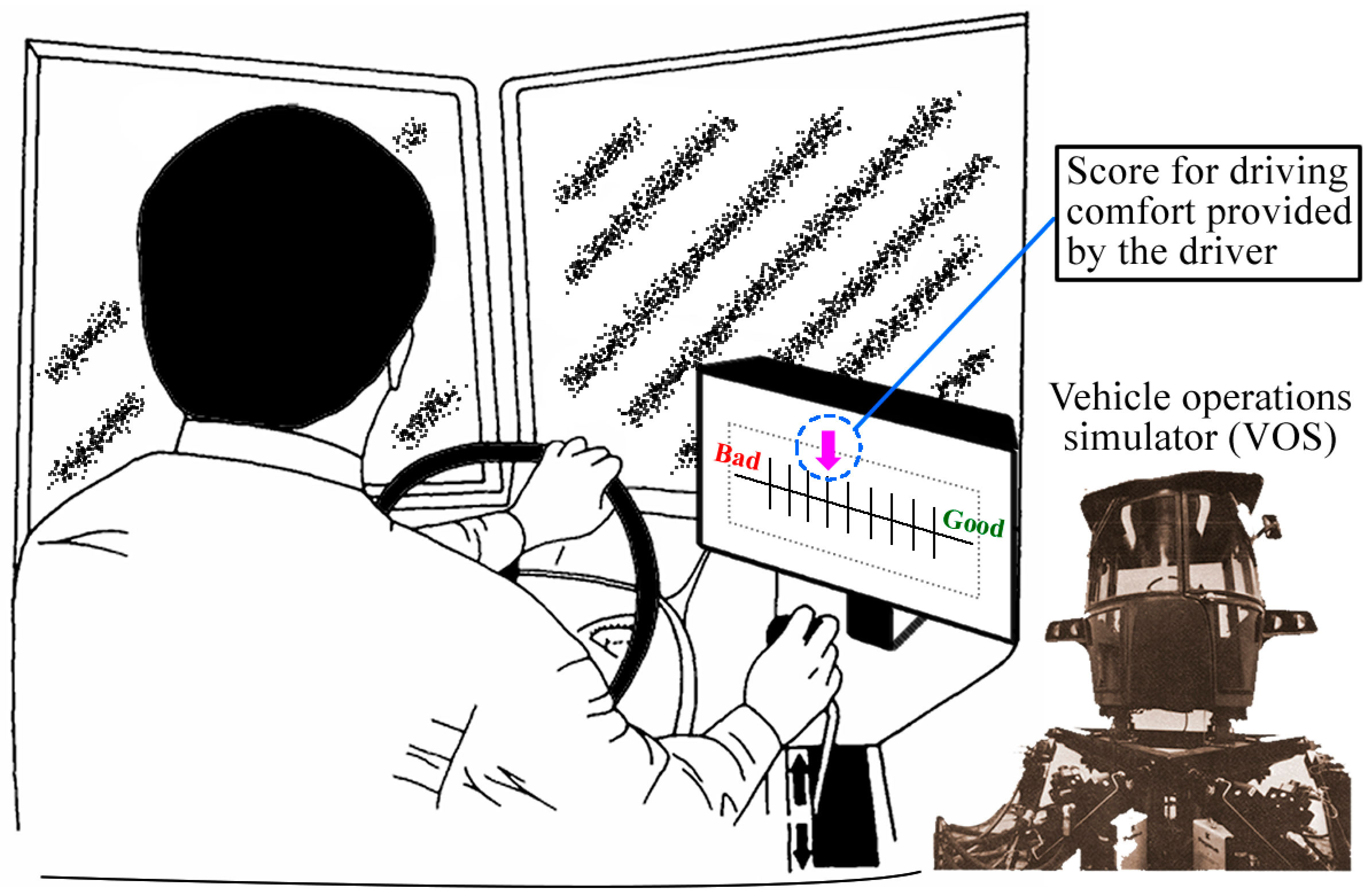
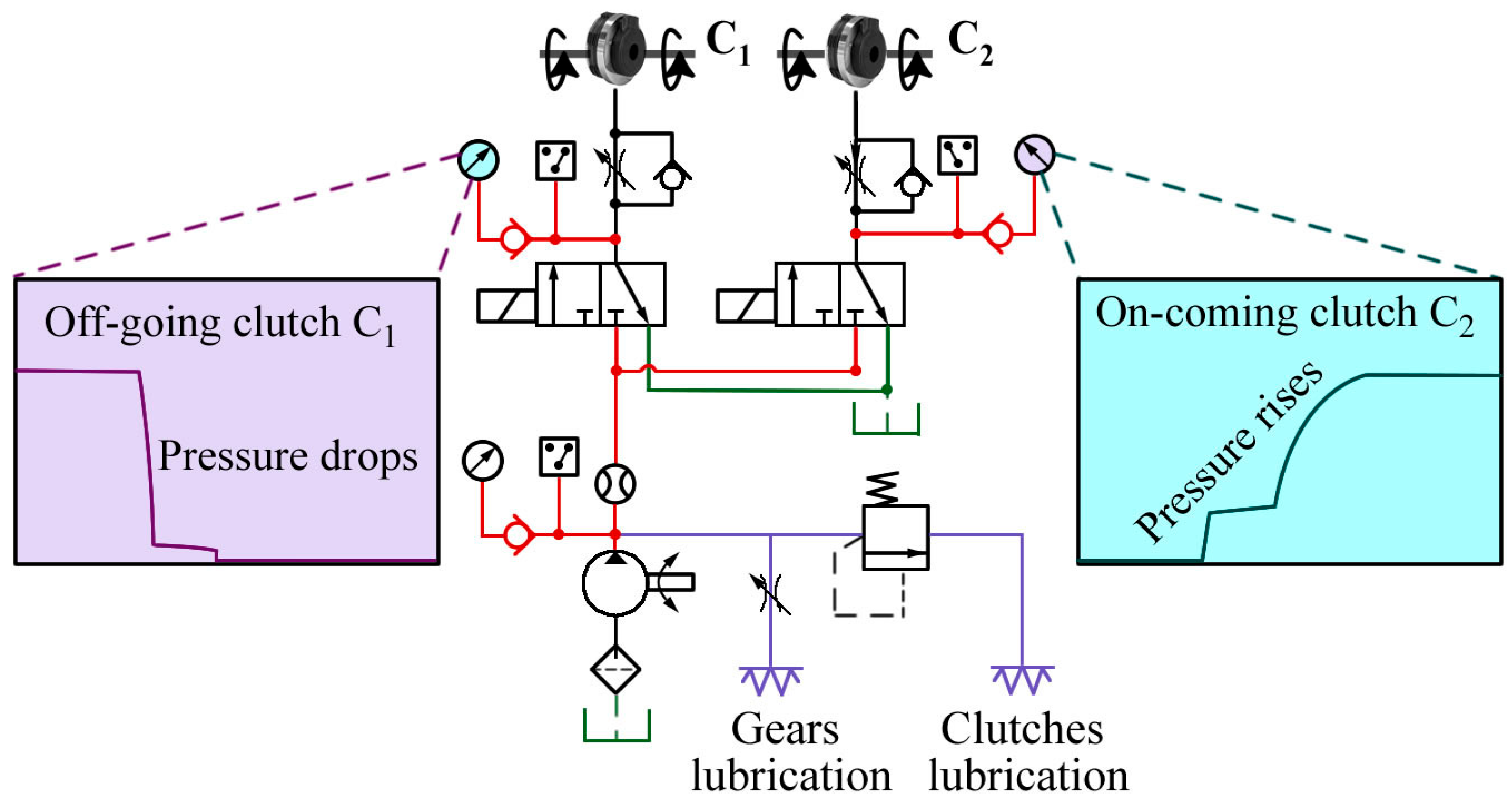

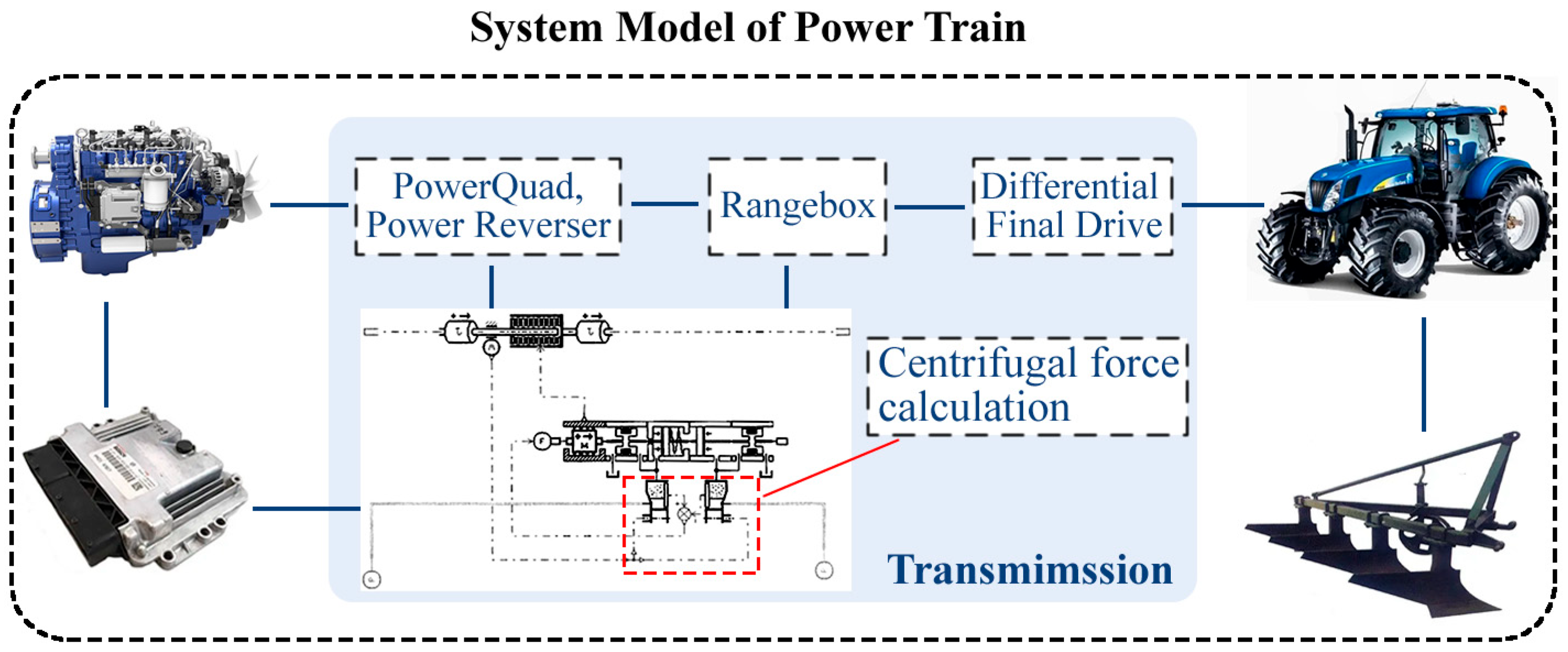

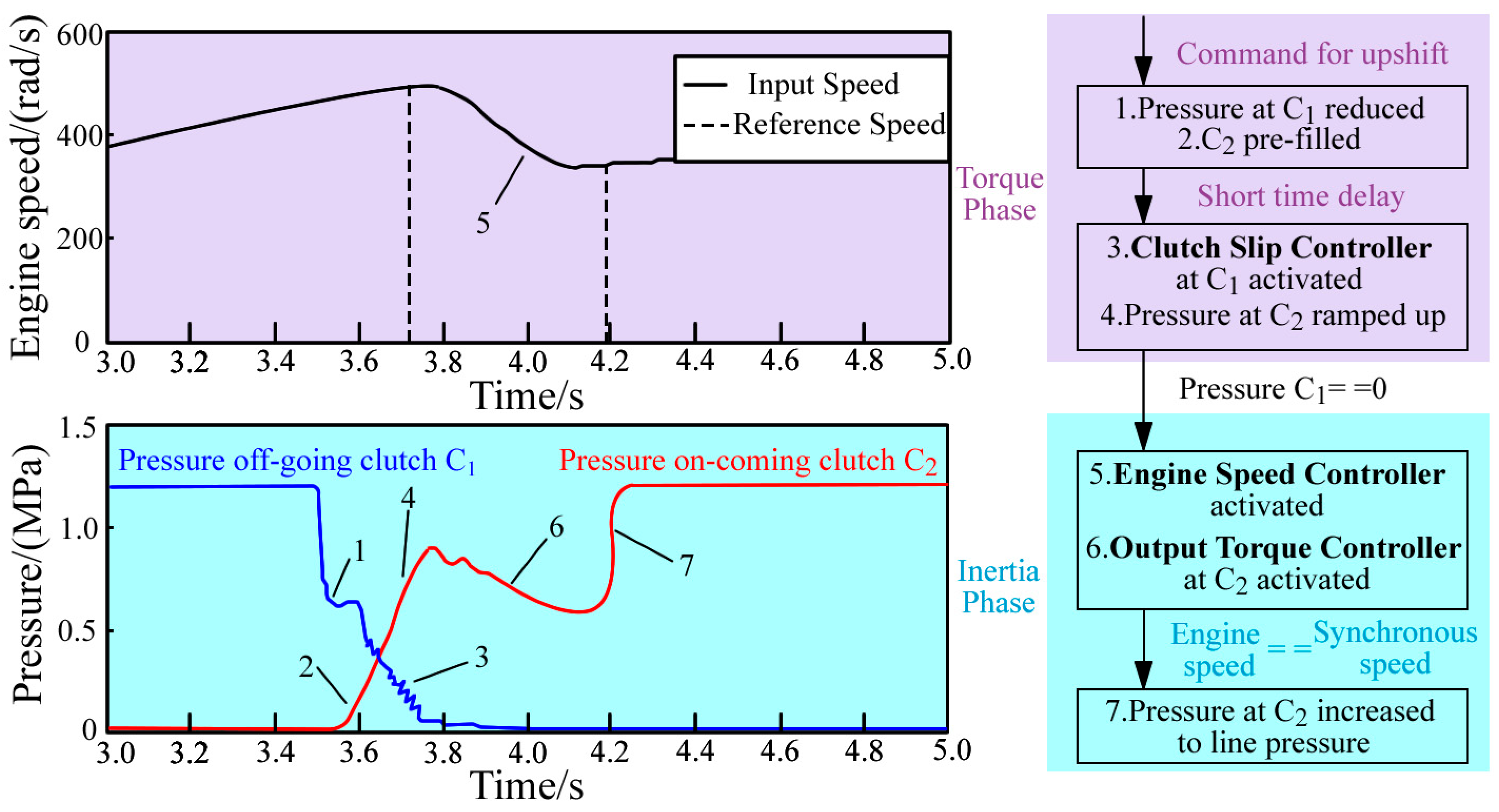
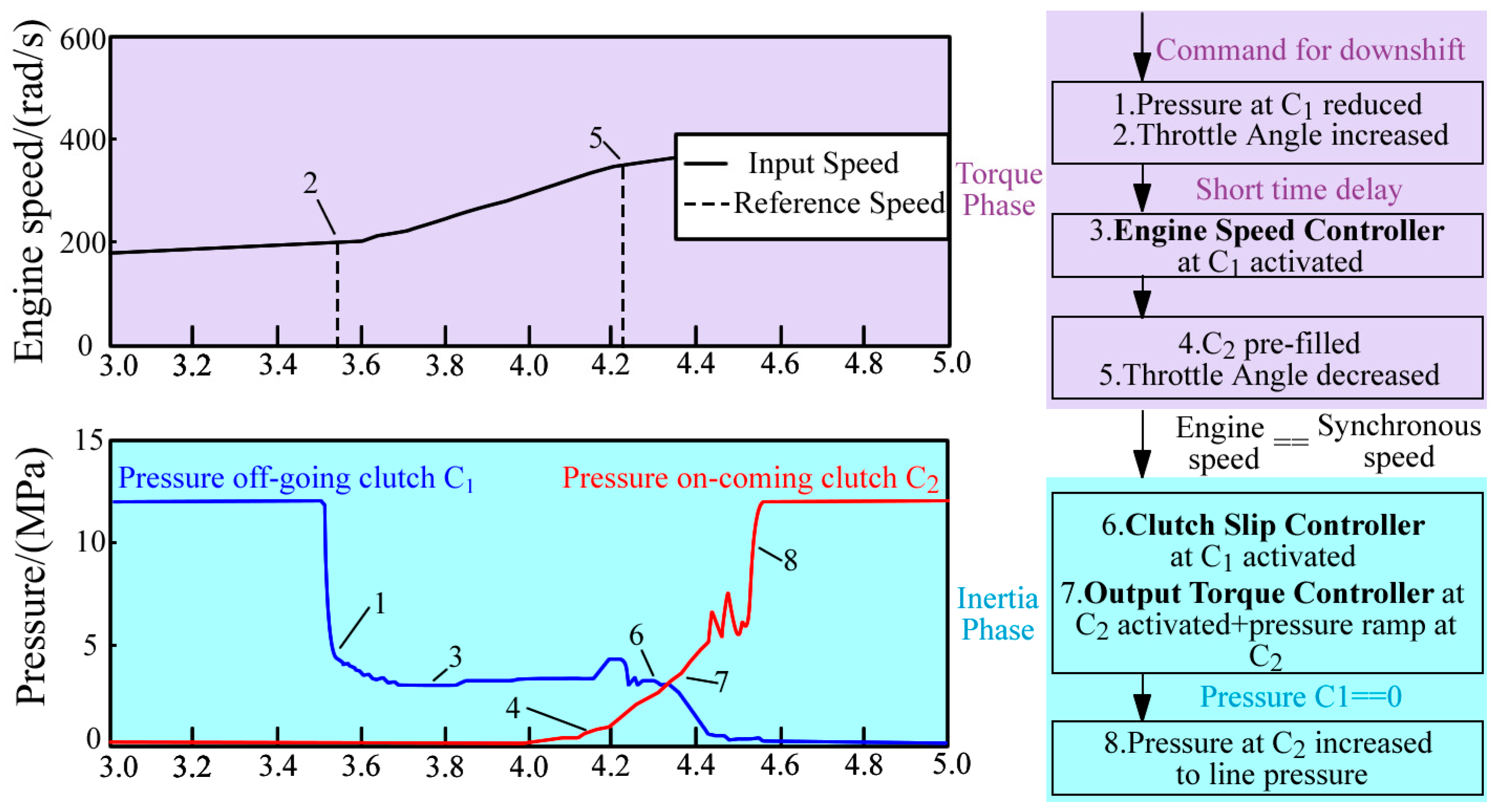
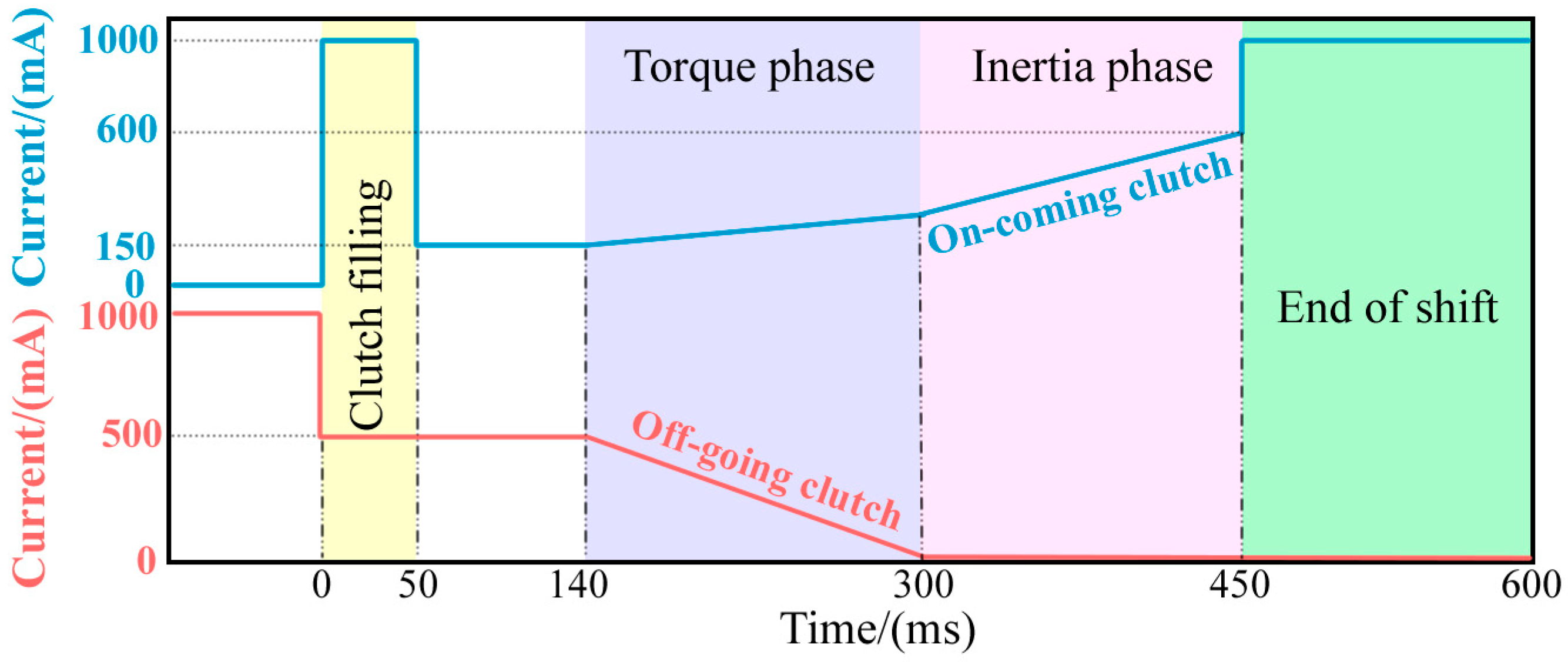
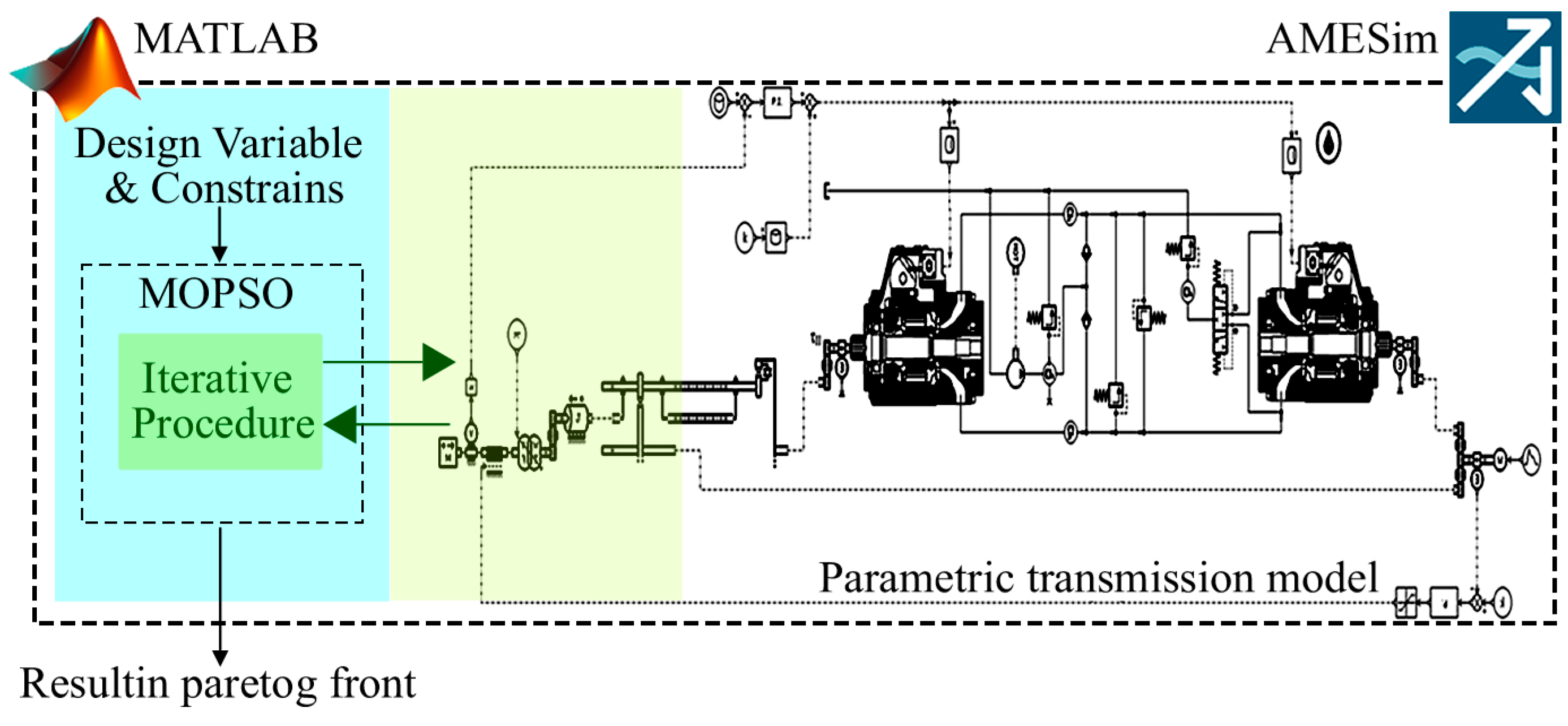
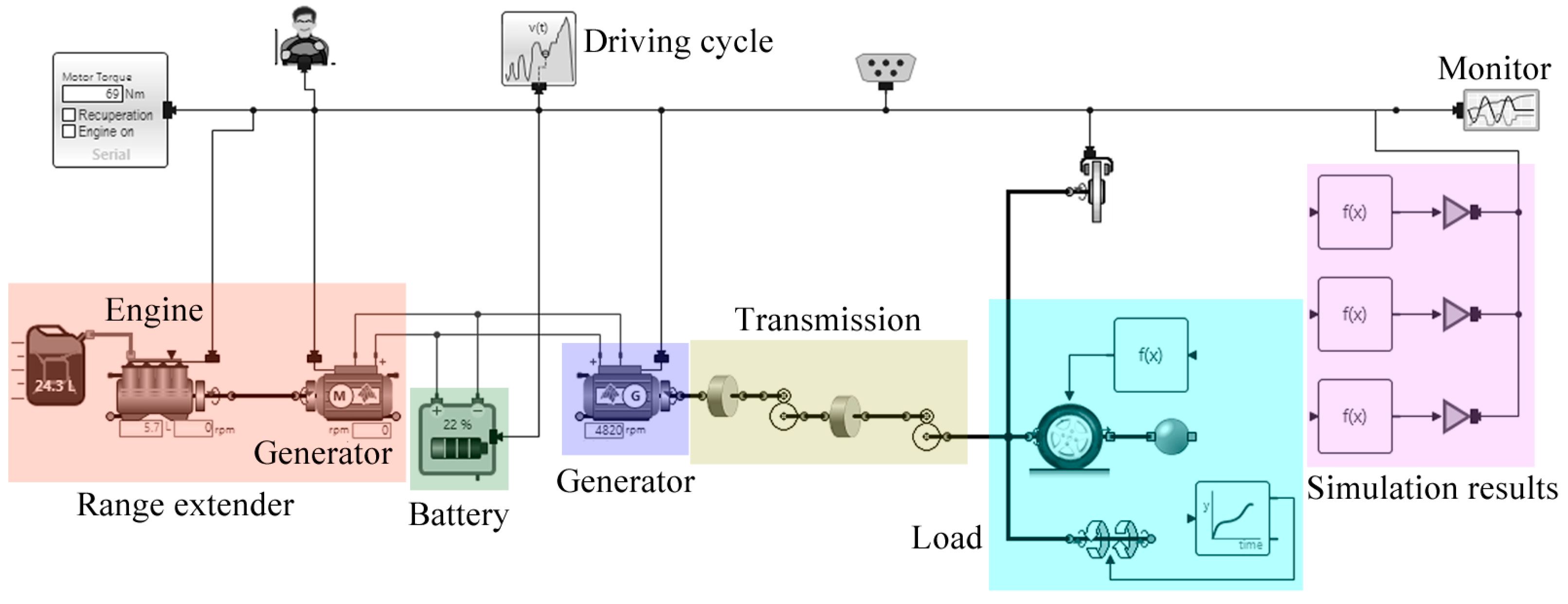
| Type | Sub-Type | Principle of Speed Regulation | Comments | Application in Tractors |
|---|---|---|---|---|
| Mechanical | Mechanical | Shift with sliding gears, engagement sleeves, or synchronizers. | ● Low manufacturing cost and high transmission efficiency. ● Low operational efficiency. | Suitable for tractors of various powers, such as the 5-754 tractor produced by John Deere (Moline, IL, USA) that uses engagement sleeves for shifting and the MH2204 tractor produced by Wuzheng (Rizhao, China) that uses synchronizers for shifting. Note that this type of tractor has gradually been phased out in many developed countries. |
| Power-shift | Full power-shift | Shift with wet clutches. | ● High transmission efficiency and operational efficiency. ● High manufacturing cost and difficulty in controller design. | Suitable for large power tractors, such as the 9RT590 tractor produced by John Deere (Moline, IL, USA) and the Puma2304 tractor produced by CNH (London, UK). |
| Semi power-shift | Combination of power-shift and mechanical-shift. | ● Medium manufacturing costs and high transmission efficiency. ● Medium operating efficiency. | Suitable for large and medium power tractors, such as the LZ2604 tractor produced by YTO (Luoyang, China) and the 8W2804 tractor produced by Deutz-Fahr (Treviglio, Italy). | |
| CVT | Metal belt or chain (direct) | Change the radius of the traction force. | ● High transmission efficiency and operating efficiency, and low manufacturing cost. ● Low load driving capability. | Although engineers have developed a large number of tractor prototypes, such as the Munich Research Tractor released by TUM (München, Germany) in 1988, they have never been accepted by the market. However, this type of transmission is widely used in road vehicles. |
| Metal belt or chain (power-split) | ● High transmission efficiency but lower than its direct version; High operating efficiency and medium manufacturing cost. ● Low load driving capacity but higher than its direct version. | |||
| Hydrostatic (direct) | Change the unit’s displacement. | ● High load driving capability and operating efficiency. ● Medium manufacturing cost, low transmission efficiency, and high noise level. | Suitable for small power tractors, such as the L2502 HST tractor produced by Kubota (Osaka, Japan) and the Solis26 HST tractor produced by ITL (Hoshiarpur, India). Note that this transmission system can also be used for large and medium power tractors, but its performance is not as good as its power-split version. | |
| Hydrostatic (power-split) | ● High load driving capability, transmission efficiency, and operating efficiency. ● High manufacturing cost and noise level. | Suitable for large and medium power tractors, such as the P7000 tractor produced by Lovol (Weifang, China) and the 1000 Vario tractor produced by Fendt (Marktoberdorf, Germany). | ||
| Electrical (direct with engine) | Change the frequency of current or electric flux. | ● High operating efficiency. ● High manufacturing cost and low transmission efficiency. | Upcoming. Some tentative applications: Belarus 3023 tractor produced by Minsk Tractor Works (Minsk, Belarus), and HB2204 tractor produced by YTO (Luoyang, China). | |
| Electrical (direct with battery) | ● High operating efficiency. ● Very high manufacturing cost and short operation time. | Upcoming, with long-term potential. Some tentative applications: SESAM tractor produced by John Deere (Moline, IIIinois, USA), and e100 Vario tractor produced by Fendt (Marktoberdorf, Germany). | ||
| Electrical (power-split) | ● High transmission efficiency and operating efficiency. ● High manufacturing cost. | Upcoming, the most promising next-generation tractor CVT. Some tentative applications: 8R 410 tractor produced by John Deere (Moline, IL, USA). |
| Evaluation Indicator | Expression | Type of Shift Quality Indicated | Comments |
|---|---|---|---|
| Speed fluctuation. | Impact on the driver. | ● The relationship between this indicator and tractor driving comfort needs to be confirmed. ● Power interruption (i.e., ) will affect the evaluation of shift quality. | |
| Peak acceleration. | Impact on the driver. | ● John Deere has confirmed the close relationship between this indicator and tractor driving comfort under field background vibration. ● Suitable for evaluating the shift quality of tractors during field operations. | |
| Jerk. | Impact on the driver. | ● John Deere has already denied the validity of this indicator under field background vibration, but it is widely recognized in evaluating the shift quality of road vehicles. ● Suitable for evaluating the shift quality of tractors during road transportation. | |
| Torque fluctuation. | or | Impact on the entire transmission system. | ● The relationship between this indicator and clutch service life needs to be confirmed. ● Excessive will affect the sensitivity of this evaluation indicator. |
| Peak sliding friction power of clutch. | Impact on the clutch. | ● The relationship between this indicator and clutch service life needs to be confirmed. | |
| Sliding friction work of clutch. | Impact on the clutch. | ● It directly reflects the clutch energy loss. | |
| Customized evaluation indicator. | - | - | Not recommended for use without experimental support. |
| Friction Materials | |||||
|---|---|---|---|---|---|
| steel–steel | 0.10 … 0.12 | 0.05 … 0.07 | 0.95 | 0.3 | 0.0003 |
| steel–sintered-bronze | 0.11 … 0.13 | 0.07 … 0.09 | 0.85 | 0.08 | 0.0004 |
| steel–organic | 0.30 … 0.40 | 0.30 … 0.40 | 0.85 | 0.05 | 0 |
| steel–paper | 0.10 … 0.12 | 0.10 … 0.14 | 0.85 | 0.15 | −0.0003 |
| Model | Sub-Model | Modeling Options | Comments |
|---|---|---|---|
| Power | Engine | Speed control. | Three models are available for selection: ● Constant speed: It is suitable for simulating tractor CVTs that meet the equal-speed shift conditions. ● Speed regulation using a closed-loop controller: It is suitable for simulating general power-shift transmissions. ● Speed regulation using engine map: It is also suitable for simulating general power-shift transmissions. However, the accuracy of controlling engine speed through throttle is lower than that of closed-loop controllers. |
| Fuel consumption map. | ● Not a mandatory option. | ||
| Crankshaft inertia. | ● It must be considered when using variable engine speeds. | ||
| Transmission and axle | Wet clutch | Friction coefficient. | ● The vast majority of models mentioned in previous studies use fixed friction coefficients, while those validated through multi-condition experiments use variable friction coefficients. Therefore, we recommend using variable friction coefficients in precise modeling. The calculation of the friction coefficient can refer to Equation (9) and Table 3. |
| Centrifugal force of oil. | ● Although some studies have considered the influence of centrifugal force on the shape of clutch pressure curves, no further shift tests have been conducted. Since most fully validated models do not take this into account, it is not a mandatory choice. | ||
| Gear or PG | Meshing efficiency. | ● In general, gears and PG have high efficiency, so energy loss can be ignored in simple transmission systems. Otherwise, meshing efficiency should be taken into account. | |
| Shaft | Stiffness and damping. | ● Only when observing torsional vibration is it necessary to consider stiffness and damping in the model. | |
| Moment of inertia. | ● It must be considered. | ||
| Pump or motor | Mechanical efficiency and volumetric efficiency. | ● Hydraulic pumps and hydraulic motors are commonly used in CVTs. Due to the low efficiency of hydraulic systems, it is necessary to consider their efficiency, especially their volumetric efficiency. | |
| Dynamics of the displacement control unit. | ● It can be regarded as a second-order system and represented by a difference equation, as detailed in [60]. | ||
| Load | Theoretical load | Constant load. | ● A constant load can be used in qualitative analysis, such as comparing the effects of parameters on shift quality. |
| Load with noise. | ● To analyze the robustness of the shift control strategy, noise can be added to the load model. | ||
| Dynamic load | Mass of tractor unit. | ● It must be considered. |
| Model | Sub-Model | Modeling Options | Comments |
|---|---|---|---|
| Power and energy | Engine | Speed control. | Three models are available for selection: ● Constant speed: It is suitable for simulating transmission energy consumption—for example, simulating the CVT efficiency map at a specified input speed. ● Speed regulation using a closed-loop controller: It is suitable for simulating energy management strategies that require simultaneous control of engine speed and gear ratio. ● Speed regulation using engine map: It is suitable for simulating energy management strategies that only save fuel by adjusting the gear ratio. |
| Fuel consumption map. | ● It must be considered when simulating fuel economy and used to query fuel consumption at a specified engine speed and torque. | ||
| Crankshaft inertia. | ● It is not a mandatory option in simple energy consumption calculations, but the impact of dynamic processes on tractor fuel consumption should be considered in driving cycles. | ||
| Battery | - | ● Its modeling method refers to Equations (30)–(39). | |
| Motor or Generator | - | ● Its modeling method refers to Equations (40) and (41). | |
| Transmission and axle | Wet clutch | Frictional behavior. | Not a mandatory option. |
| Gear or PG | Meshing efficiency. | ● It must be considered, and the meshing efficiency of gears and PG can usually be regarded as a constant. ● In power-split systems, meshing efficiency is used to accurately calculate the torque of each basic component of PG. Some studies did not consider the efficiency of PG to simplify calculations, but its rationality needs to be confirmed. ● In precise energy consumption simulation, it is usually necessary to consider the efficiency of bearings supporting gears or PG. | |
| Shaft | Stiffness and damping. | Not a mandatory option. | |
| Moment of inertia. | ● It is not a mandatory option in simple energy consumption calculations, but the impact of dynamic processes on tractor fuel consumption should be considered in driving cycles. | ||
| Pump or motor | Mechanical efficiency and volumetric efficiency. | ● It must be considered. In some literature, fixed efficiency values have been used, but we still recommend using measured data or accurate energy consumption models to run simulations. | |
| Dynamics of the displacement control unit. | Not a mandatory option. | ||
| Load | Theoretical load | Slop resistance. | ● It must be considered when the tractor is operating on sloping ground. |
| Rolling resistance. | ● It must be considered. | ||
| Air resistance. | ● It must be considered when the tractor has a cab with a large windward area and is driving at high speeds. | ||
| Traction resistance. | ● It must be considered when the tractor is towing agricultural machinery for operation. | ||
| Dynamic load | Mass of tractor unit. | ● It is not a mandatory option in simple energy consumption calculations, but the impact of dynamic processes on tractor fuel consumption should be considered in driving cycles. |
Disclaimer/Publisher’s Note: The statements, opinions and data contained in all publications are solely those of the individual author(s) and contributor(s) and not of MDPI and/or the editor(s). MDPI and/or the editor(s) disclaim responsibility for any injury to people or property resulting from any ideas, methods, instructions or products referred to in the content. |
© 2024 by the authors. Licensee MDPI, Basel, Switzerland. This article is an open access article distributed under the terms and conditions of the Creative Commons Attribution (CC BY) license (https://creativecommons.org/licenses/by/4.0/).
Share and Cite
Li, Y.; Chen, X.; Han, X.; Xu, N.; Zhai, Z.; Lu, K.; Zhu, Y.; Wang, G. Application of Computer Simulation Technology in the Development of Tractor Transmission Systems. Agriculture 2024, 14, 1547. https://doi.org/10.3390/agriculture14091547
Li Y, Chen X, Han X, Xu N, Zhai Z, Lu K, Zhu Y, Wang G. Application of Computer Simulation Technology in the Development of Tractor Transmission Systems. Agriculture. 2024; 14(9):1547. https://doi.org/10.3390/agriculture14091547
Chicago/Turabian StyleLi, Ya, Xiaohan Chen, Xiaorong Han, Ning Xu, Zhiqiang Zhai, Kai Lu, Youfeng Zhu, and Guangming Wang. 2024. "Application of Computer Simulation Technology in the Development of Tractor Transmission Systems" Agriculture 14, no. 9: 1547. https://doi.org/10.3390/agriculture14091547
APA StyleLi, Y., Chen, X., Han, X., Xu, N., Zhai, Z., Lu, K., Zhu, Y., & Wang, G. (2024). Application of Computer Simulation Technology in the Development of Tractor Transmission Systems. Agriculture, 14(9), 1547. https://doi.org/10.3390/agriculture14091547






